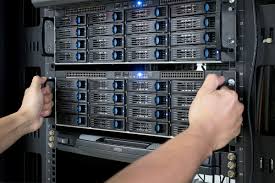Home Server Setup by Xfinity Solution Asia
Take control of your data with a custom home server tailored to your needs. At Xfinity Solution Asia, we design and install secure, high-performance home servers for data storage, media streaming, backups, private cloud hosting, and more.

Our Home Server Solutions Include:
✅ Network-Attached Storage (NAS) – Store and access your files securely from anywhere.
✅ Media Server Setup – Stream movies, music, and TV shows across all your devices.
✅ Private Cloud Hosting – Enjoy cloud storage without relying on third-party services.
✅ Automated Backup & Data Protection – Secure your important files with scheduled backups.
✅ Virtual Machines & Remote Access – Run multiple OS environments and access your server remotely.
✅ Self-Hosted Applications – Host your own websites, email, or business applications securely.
Why Choose Xfinity Solution Asia?
